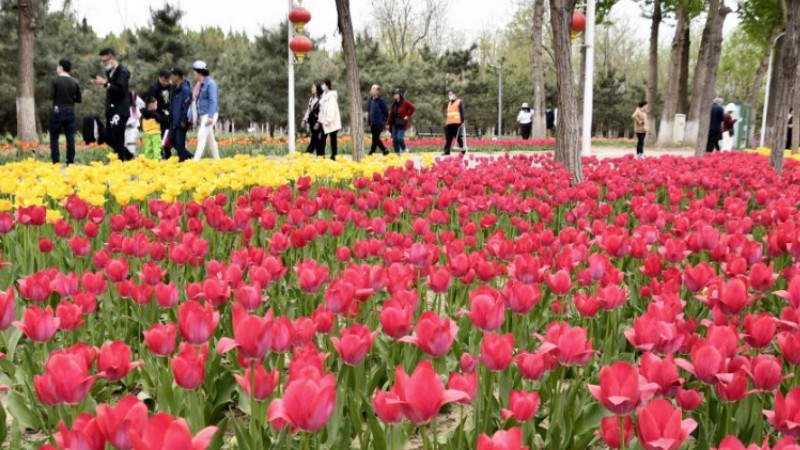Slow train provides mobile library along Yangtze River
CHONGQING, April 18 (Xinhua) -- "Life is not only about daily trifles, but also poems and distant lands," -- this is a common declaration among many Chinese netizens, which has echoed with the design idea of a newly-opened library on a slow train running along the Yangtze River.
On Tuesday, while riding the No. 5609 train from downtown Chongqing to Xiushan County, both within southwest China's Chongqing Municipality, Xing Jie, a 50-year-old construction worker, enjoyed reading a collection of poems.
The slow train, running at a speed of around 60 km per hour, stops at 17 stations along its route. It takes about seven hours for the train to reach its final destination.
Xing takes the slow train twice a month as he needs to commute between downtown Chongqing and the remote Wuling District. "I prefer slow trains to bullet trains because it's cheaper and still comfortable," he said.
Of late, the regular passenger was amazed to find that new bookshelves packed with hundreds of books, and clean desks and chairs facing the outside river view, had replaced traditional seats at a corner of the train's No. 3 carriage.
A sign that reads "train library" helps explain the changes. "We revamped our carriage into a learning area at the beginning of the year. In the run-up to the 28th World Book and Copyright Day, which falls on April 23 this year, we invited the Chongqing Library to set up its first train library aboard our train," said Deng Yeqin, head of the No. 5609 train crew.
On his way to Wulong, where Xing and around 1,000 people are engaged in a 15-km high-speed railway construction project, Xing noticed a book written by Lin Huiying and decided to make the book his journey companion.
"I heard about Xu Zhimo, a famous Chinese poet, who once fell in love with Lin, so I want to know more stories about Lin," said Xing, adding that reading when traveling along the fascinating Yangtze River is surely worthwhile because of the picturesque view and comfortable travel experience.
Qin Guangbin, another 50-year-old passenger, was reading some documents on his laptop in the learning carriage. Qin, a businessman who shuttles between Changshou District and Xiushan County, has been taking the slow train for the past five years.
"I've seen great changes made to this train over the years, not just the new train library. I can tell how hard the train crew has worked on improving the travel experience for their passengers," Qin said.
As an industry insider who has witnessed nearly three decades of China's transport evolution, Xing has participated in construction work ranging from highways to high-speed railways, which clearly reflects the rapid development of China. However, such a slow train remains indispensable in the daily lives of ordinary people, as the train shows love and care for the country's farmers, students, senior citizens and other groups, according to Xing.
Slow trains have been working on customized services for specific groups of passengers over the years. Some sacrificed seats to provide space for farmers who travel with livestock they are planning to sell, while Deng's train mainly serves students, who account for the majority of its passengers, especially at weekends.
"In the future, we will have more kinds of books on offer and strive to further enrich the travel experience for our passengers," Deng added.
Photos
Related Stories
- First 'forest library' in Shanghai opens to public
- A glimpse into library transformed from water plant in Longgang, E China's Zhejiang
- Liuzhou Railway Station in S China's Guangxi turns waiting hall into "library"
- Libraries in New Zealand city receive donated children's books on Chinese Immersion Day
- Richelieu French National Library reopens to public in Paris
Copyright © 2023 People's Daily Online. All Rights Reserved.









